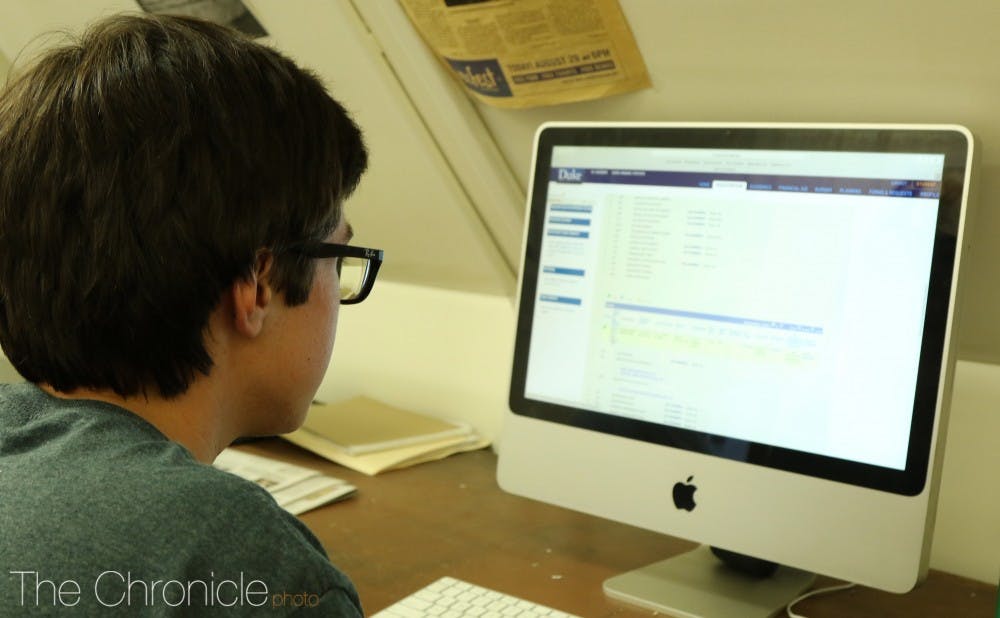With students off campus for the remainder of the semester and online classes starting up, it’s fair to wonder what the rest of the semester will look like.
Duke announced March 10 that because of the coronavirus outbreak, classes would move online after an extended spring break that would allow instructors to prepare to deliver their courses remotely. To aid instructors in the transition, the Learning Innovation team established Keep Teaching, a website containing resources to continue teaching remotely.
The “immediate recommendations” listed on the front page include creating a Sakai site, contacting students prior to classes resuming and setting up the video-conferencing platform Zoom.
Beyond this, however, instructors have the freedom to tailor online instruction to their own course goals.
Hands-on courses will require some ingenuity on the instructors’ part, especially when it comes to long-term projects. Students enrolled in the senior design course ECE 449, “Sensors and Sensor Interface Design,” will receive materials to continue their projects in the mail, according to Martin Brooke, associate professor of electrical and computer engineering.
“It is very hard to continue hardware projects started on campus remotely so this is a huge experiment for us,” Brooke wrote in an email.
Brooke and Nan Jokerst, J.A. Jones distinguished professor of electrical and computer engineering, are shipping supplies necessary to build an optoelectronic system for an animal pulse oximeter. In lieu of animal tissue, students will be using Jello and India ink phantoms to test their devices, Brooke wrote.
In contrast, some faculty members have experience with teaching courses completely online. Leonard White, director of undergraduate studies in neuroscience, has been teaching NEUROSCI 202, “Medical Neuroscience,” through Coursera since 2013.
Duke began offering the online course, initially designed for medical students, to undergraduate students for credit in Summer 2018. White emphasized the benefits of the course being open to all.
“I just think it’s tremendous how this technology and this opportunity before us allows us to reach our own students in a unique way, but also bring the rest of the world into that same classroom,” White said.
White is teaching courses at Duke and Duke Kunshan University in the coming weeks. He plans to post pre-recorded content and make himself available to students who may need assistance. Similar to the medical neuroscience course, the material will be posted on Coursera.
White sees the shift to online teaching as an opportunity for the University to form stronger relationships with students and to make distance learning “personal and impactful.” During his interview conducted through Zoom, he said he looked at the webcam rather than his screen to give the impression of direct eye contact.
“Imagine if I were on stage in Love Auditorium, Griffith Theater or Reynolds Theater in a large class setting,” he said. “We would not have that same connection.”
White also hopes that the current circumstances will allow the University to reevaluate its stance on offering academic credit for online courses.
“These are not the circumstances under which I wanted to see that opening. but I do think that it’s an opening nevertheless,” White said.
Medical Neuroscience isn’t the only course that has been taught online before, though it hasn't been common. The only course listed in DukeHub for fall and spring semesters as an “Online Course” in recent years was the lecture section for a class in Information Science + Studies—ISS 240L, “Web-based Multimedia Communication”—in Fall 2018.
Victoria Szabo, a research professor of art, art history and visual studies who taught the course, told The Chronicle in an email that weekly lectures were posted online but students were still expected to attend two in-person labs per week.
“The use of videos was an experiment in providing videos instead of in-person lectures, with the added benefit that people could refer back to them later as they wished,” Szabo wrote. “The online lectures were not, however, a type of lecture that I would ideally create for a class that was more wholly online, or even an intentionally hybrid course.”
The goal of offering online lectures was to allow students more flexibility in their course schedules, Szabo wrote. The videos covered concepts that would be explored through hands-on activities later on. They were supposed to include live demos, but there was not enough time to implement them.
Although the course switched back to in-person lectures for the current academic year, Szabo said instructors still hoped to reduce the number of in-person meetings while ensuring that time spent outside of class was just as productive as an in-person session.
“The asynchronous side of instruction is part of what we want to see how to do better online,” Szabo wrote. “We may end up learning more about that this semester, especially when facing multiple timezones and possible bandwidth limits, but we continue to privilege the immediacy of synchronous communication and group learning wherever we can.”
Get The Chronicle straight to your inbox
Signup for our weekly newsletter. Cancel at any time.

Nadia Bey, Trinity '23, was managing editor for The Chronicle's 117th volume and digital strategy director for Volume 118.

